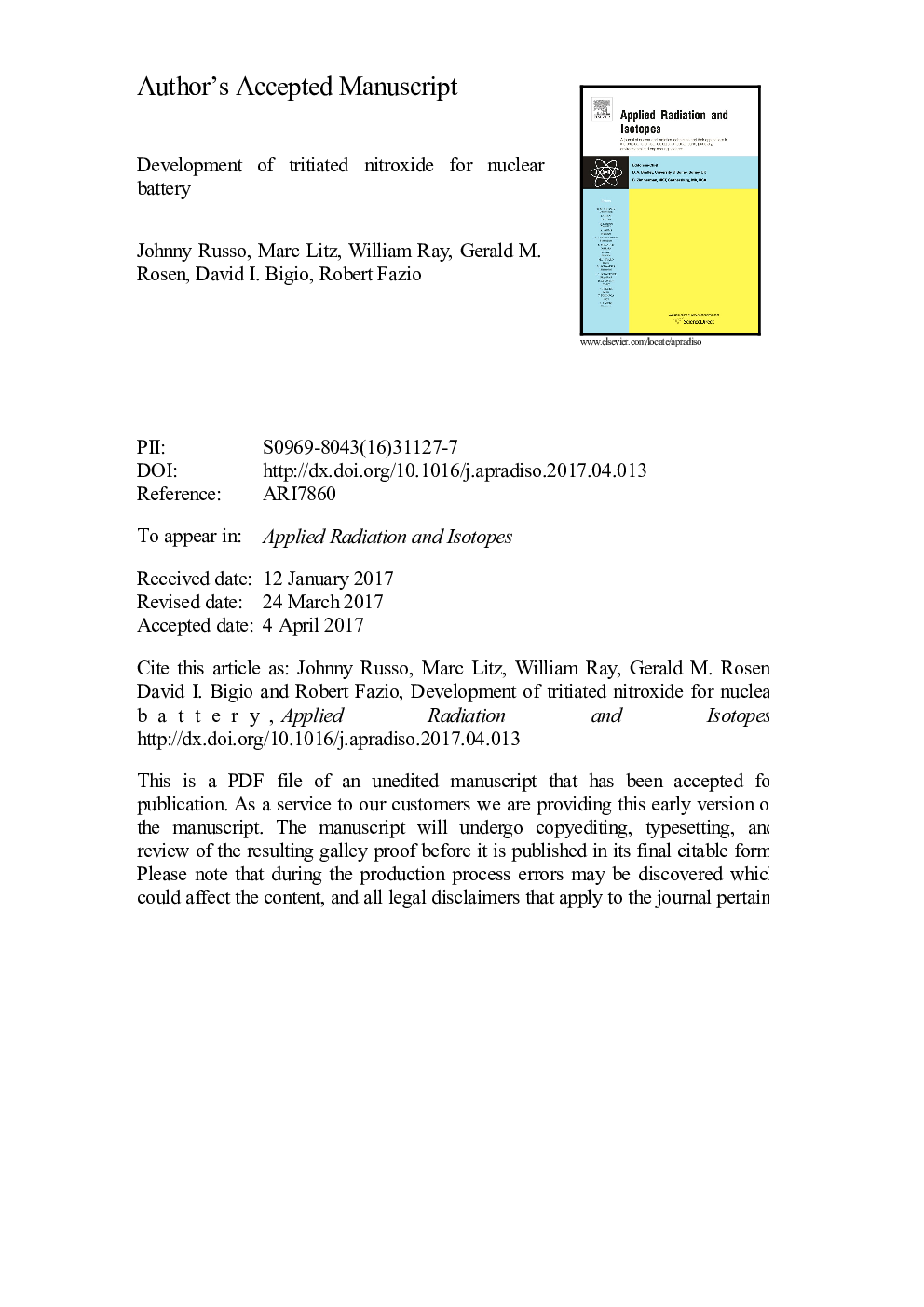| Article ID | Journal | Published Year | Pages | File Type |
|---|---|---|---|---|
| 5497939 | Applied Radiation and Isotopes | 2017 | 24 Pages |
Abstract
Beta radioisotope energy sources, such as tritium (3H), have shown significant potential in satisfying the needs of a sensor-driven world. The limitations of current beta sources include: (i) low beta-flux power, (ii) intrinsic isotope leakage and (iii) beta self-absorption. The figure of merit is the beta-flux power (dPβ/dS in μWn/cm2), where an optimal portion of incident beta particles penetrates the semiconductor depletion region. Thus, the goal of this research was to identify a compound to contain a beta emitter that can permit beta-flux power of at least 0.73 μWn/cm2 from one side, where it can be used for both planar and textured semiconductor structures. Nitroxides were chosen because of previous demonstrated deuteration, ease of synthesis, diversity of structure, and pliability. As a proof-of-principle, nitroxide [1] was prepared and tritiated with a specific activity of 103 Ci/g. The corresponding tritiated nitroxide in toluene was found to have no measurable 3H2 outgassing after 27 days, thus it was considered stable. After 256 days in solution, analysis of the compound showed only 2% tritium loss, whereas in solid form, there was approximately 50% of tritium loss after 21 days. To compare with the performance of a typical metal tritide carrier, the standard MCNPX Monte Carlo code was used to calculate the beta-flux power of tritiated nitroxide and titanium tritide (0.2 μWn/cm2 and 0.70 μWn/cm2), respectively. The difference between numerical and empirical results of titanium tritide was 4%, showing the model validity. For the tritiated nitroxide to be comparable to titanium tritide in a planar configuration (2-D), the gravimetric density (3H weighted percentage) would need to be at least 9%.
Related Topics
Physical Sciences and Engineering
Physics and Astronomy
Radiation
Authors
Johnny Russo, Marc Litz, William II, Gerald M. Rosen, David I. Bigio, Robert Fazio,
